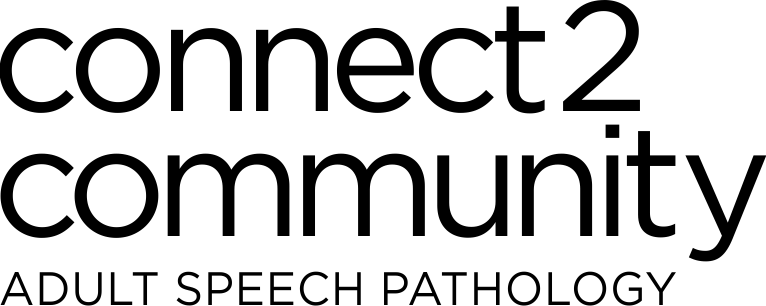

Acquired NEUROLOGICAL Communication DisorderS
cognitive Communication disorder
RIGHT HEMISPHERE DISORDER
Right Hemisphere Disorder
A right hemisphere disorder is an acquired brain injury most commonly due to stroke that occurs in the right cerebral hemisphere causing impairments in language and other cognitive (thinking) areas that affect communication. Other causes are brain tumours and head injuries. A right hemisphere disorder can cause a variety of problems that affect thinking, memory, communication, emotions, visuo-spatial, and perceptual deficits (facial recognition). Given that impairments in communication for individuals with right hemisphere disorder are often related to underlying impairments in cognition, they are commonly referred to as a cognitive-communication disorder.
Areas of communication that can be affected after right hemisphere disorder:
Areas of communication that can be affected after right hemisphere disorder:
- Lexical-semantic difficulties: knowledge of the meaning of words and how a word represents the meaning it conveys
- Difficulty interpreting metaphors (The night sky was a blanket of stars), idioms (It’s raining cats and dogs), jokes, humour, sarcasm
- Discourse difficulties may arise in both comprehension (understanding) and production (spoken expression)
- Discourse comprehension: difficulty understanding the overall meaning/theme/gist of what is said.
- Discourse production: poorly organised thoughts, difficulty with topic relevance and maintenance. This can result in either a paucity (too little) of information or verbosity (too much) of information.
- Pragmatic difficulties: the interactional and social use of language.
- Difficulty with the social communication aspects of interactions (difficulty recognising social cues – i.e., tone of voice, gestures, facial expression, body language and the ‘social rules’ used to have appropriate conversations or interactions)
- Difficulty understanding others’ point of view
- Prosodic difficulties: the melody of speech or tone of voice
- Difficulty with controlling the changes in speech rate, pitch, loudness, emphasis and pausing to help convey emotion and what the speaker really means. Some people with right hemisphere disorder may also have difficulty understanding the speaker’s prosody.
Areas of cognition that can be affected after right hemisphere disorder:
Executive functions
- Initiation and drive
- Response inhibition
- Task persistence
- Organisation
- Generative thinking
- Awareness
- Executive function difficulties may contribute to behaviour displayed in everyday tasks such as reduced awareness, problem solving, self-monitoring in social situations and reduced organisational skills.
Attention
- Reduced attention apparent across all types of attention: focused, sustained, selective, alternating and divided.
- People with right hemisphere disorder may appear disengaged in conversation, distracted in noisy environments, and with reduced attention to task
- Unilateral spatial neglect is another attention impairment that presents as inability to attend to the left spatial area.
Memory
Impairments in attention relate to memory impairments as the two areas of cognition are so interconnected. The interaction of attention and memory systems can result in apparent impairments in short-term memory, nonverbal memory and working memory.
Agnosias
- Anosognosia refers to a person’s reduced awareness of their impairments
- Prosopagnosia refers to a failure to recognise faces.
It’s important to be aware of the following:
- Even a mild right hemisphere communication disorder can impact function in daily living, return to vocational pursuits and participation in desired activities (e.g., social participation, interpersonal activities)
- Communication deficits related to right hemisphere disorder tend to be subtle rather than outright speech production errors (dysarthria or apraxia of speech) or word retrieval difficulties (such as in aphasia)
- Informed carers are vital members of the therapy team.
How can connect2community speech pathology help?
A speech pathologist can:
- Identify a holistic profile of a client’s communication needs and ability
- Collaborate with client and family members towards person-centered therapy goals
- Discuss therapy options specific to the client’s communication need and goals
- Provide treatments that meet the client’s communication need and goals. All treatments focus on real-life, meaningful situations and tasks to enhance success in conversation for the person with right hemisphere disorder
- Provide communication partner training and support for the individual with right hemisphere disorder and their close communication partner/s. Knowledge and the use of facilitative strategies by communication partners can enhance successful conversation.
- Identify barriers and facilitators within the person’s communication environment, with the goal being – how to best support communication for the person with right hemisphere disorder within their community.
- Provide right hemisphere disorder specific education for the client and family
Please contact connect2community speech pathology if you have any concerns or questions regarding a cognitive–communication disorder (right hemisphere disorder) or a recent diagnosis of a cognitive–communication disorder (right hemisphere disorder).
PHONE 0411 864 386
EMAIL info@connect2community.au
